Related Research Articles

Archduke Charles Louis John Joseph Laurentius of Austria, Duke of Teschen was an Austrian field-marshal, the third son of Emperor Leopold II and his wife, Maria Luisa of Spain. He was also the younger brother of Francis II, Holy Roman Emperor. He was epileptic, but achieved respect both as a commander and as a reformer of the Austrian army. He was considered one of Napoleon's more formidable opponents and one of the greatest generals of the French Revolutionary and Napoleonic Wars.

François Sébastien Charles Joseph de Croix, Count of Clerfayt, a Walloon, joined the army of the Habsburg monarchy and soon fought in the Seven Years' War. Later in his military career, he led Austrian troops in the war against Ottoman Turkey. During the French Revolutionary Wars he saw extensive fighting and rose to the rank of Field Marshal.
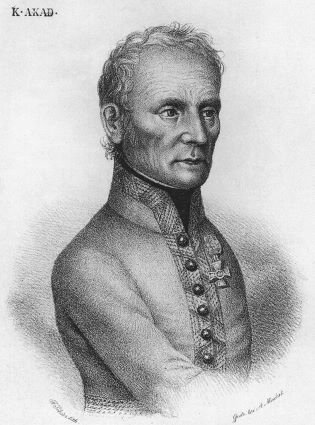
Karl Freiherr Mack von Leiberich was an Austrian officer. He is best remembered as the commander of the Austrian forces that capitulated to Napoleon's Grande Armée in the Battle of Ulm in 1805.

The emperor of Austria was the ruler of the Austrian Empire and later the Austro-Hungarian Empire. The hereditary imperial title and office was proclaimed in 1804 by Francis II, Holy Roman Emperor, a member of the House of Habsburg-Lorraine, and continually held by him and his heirs until Charles I relinquished power in 1918.
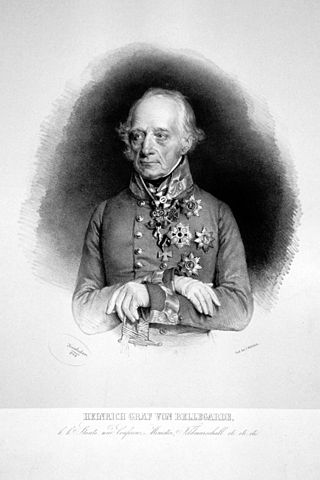
Count Heinrich von Bellegarde, Viceroy of Lombardy-Venetia, of a noble Savoyard family, was born in Saxony, joined the Saxon army and later entered Habsburg military service, where he became a general officer serving in the Habsburg border wars, the French Revolutionary Wars and the Napoleonic Wars. He became a Generalfeldmarschall and statesman.

The Battle of Caldiero took place on 30 October 1805, pitting the French Armée d'Italie under Marshal André Masséna against an Austrian army under the command of Archduke Charles, Duke of Teschen. The French engaged only some of their forces, around 33,000 men, but Archduke Charles engaged the bulk of his army, 49,000 men, leaving out Paul Davidovich's corps to defend the lower Adige and Franz Seraph of Orsini-Rosenberg's corps to cover the Austrian right against any flanking maneuvers. The fighting took place at Caldiero, 15 kilometres east of Verona, during the War of the Third Coalition, part of the Napoleonic Wars.

Archduke Albrecht Friedrich Rudolf Dominik of Austria, Duke of Teschen, was an Austrian Habsburg general. He was the grandson of Emperor Leopold II and one of the chief military advisors of Emperor Francis Joseph I. As Inspector General for 36 years, he was an old-fashioned bureaucrat who largely controlled the Austro-Hungarian Army and delayed modernization. He was honored with the rank of Field Marshal in the armies of Austria-Hungary (1863) and Germany (1893).
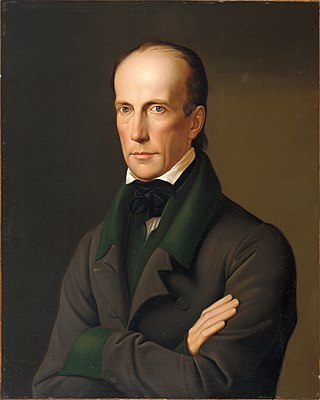
Archduke John of Austria, a member of the House of Habsburg-Lorraine, was an Austrian field marshal and imperial regent (Reichsverweser) of the short-lived German Empire during the Revolutions of 1848.

The Battle of Elchingen, fought on 14 October 1805, saw French forces under Michel Ney rout an Austrian corps led by Johann Sigismund Riesch. This defeat led to a large part of the Austrian army being invested in the fortress of Ulm by the army of Emperor Napoleon Bonaparte of France while other formations fled to the east. Soon afterward, the Austrians trapped in Ulm surrendered and the French mopped up most of the remaining Austrian forces, bringing the Ulm Campaign to a close.

The Military Order of Maria Theresa was the highest military honour of the Habsburg monarchy, Austrian Empire and Austro-Hungarian Empire.

The Order of Saint Stephen is an order of chivalry founded in 1764 by Maria Theresa. In 1938, Miklós Horthy took the rights and activities of Grand Master as Regent of Hungary. The name of the Order changed to the Royal Hungarian Order of Saint Stephen. The Order was terminated at the time of the proclamation of the Second Hungarian Republic in 1946. It was recreated in 2011 as the Hungarian Order of Saint Stephen, and to this day remains the highest order in Hungary.

Archduke Karl Ferdinand of Austria was the second son of Archduke Charles, Duke of Teschen (1771–1847) and Princess Henrietta of Nassau-Weilburg, and the maternal grandfather of King Alfonso XIII of Spain.

Johann Heinrich von Schmitt was an officer in the Army of the Holy Roman Empire. He was arguably one of the most successful chiefs of staff; he rose to the rank of Feldmarshalleutnant during the French Revolutionary and Napoleonic wars.

Count Ignác Gyulay de Marosnémeti et Nádaska, Ignácz Gyulay, Ignaz Gyulai was a Hungarian military officer, joined the army of the Habsburg monarchy, fought against Ottoman Turkey, and became a general officer during the French Revolutionary Wars. From 1806 he held the title of Ban of Croatia. In the struggle against the First French Empire during Napoleonic Wars, he commanded army corps. At the time of his death, he presided over the Hofkriegsrat, the Austrian Council of War.

The Battle of Verona was fought on 18 October 1805 between the French Army of Italy under the command of André Masséna and an Austrian army led by Archduke Charles, Duke of Teschen. By the end of the day, Massena seized a bridgehead on the east bank of the Adige River, driving back the defending troops under Josef Philipp Vukassovich. The action took place near the city of Verona in northern Italy during the War of the Third Coalition, part of the Napoleonic Wars.

Louis Charles Folliot de Crenneville joined the French royal navy in the 1770s. During the French Revolution he abandoned the First French Republic and became an Émigré. Soon afterward, he tendered his services to Habsburg Austria. He earned promotion to general officer during the Napoleonic Wars and fought in all the major campaigns against his former country. He led a division during the War of the Sixth Coalition and remained in Austrian service until his death.
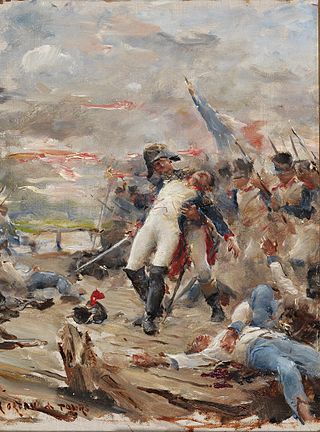
The Battle of Günzburg on 9 October 1805 saw General of Division Jean-Pierre Firmin Malher's French division attempt to seize a crossing over the Danube River at Günzburg in the face of a Habsburg Austrian army led by Feldmarschall-Leutnant Karl Mack von Lieberich. Malher's division managed to capture a bridge and hold it against Austrian counterattacks. The battle occurred during the War of the Third Coalition, part of the larger Napoleonic Wars.
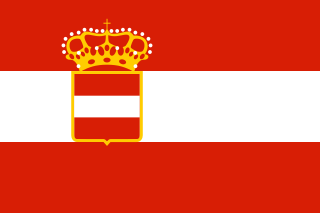
The Supreme Commander of the Imperial and Royal Armed Forces was the ultimate authority of the Austro-Hungarian Armed Forces – which comprised the Army, Navy and Aviation Troops of Austria-Hungary.
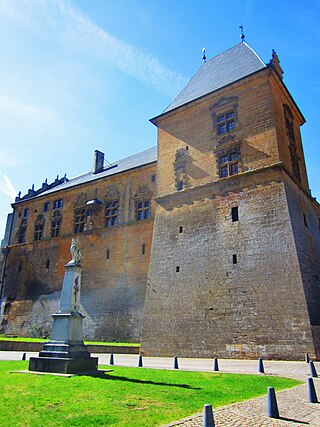
Charles-François-Antoine, marquis de Lambertie was a French aristocrat of the Ancien régime.

Karl Ludwig Grünne, Count of Pinchard was an Austro-Hungarian general.